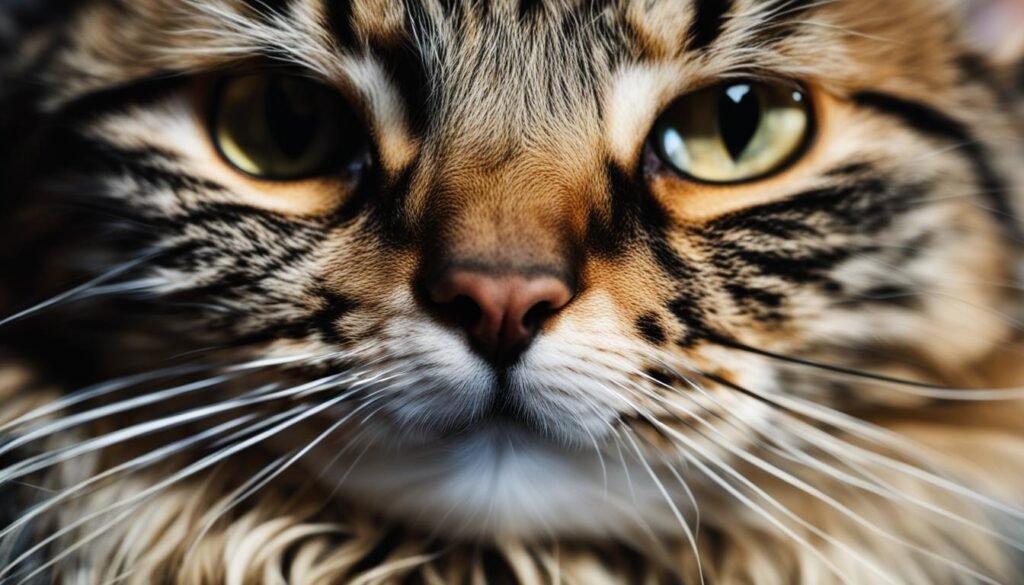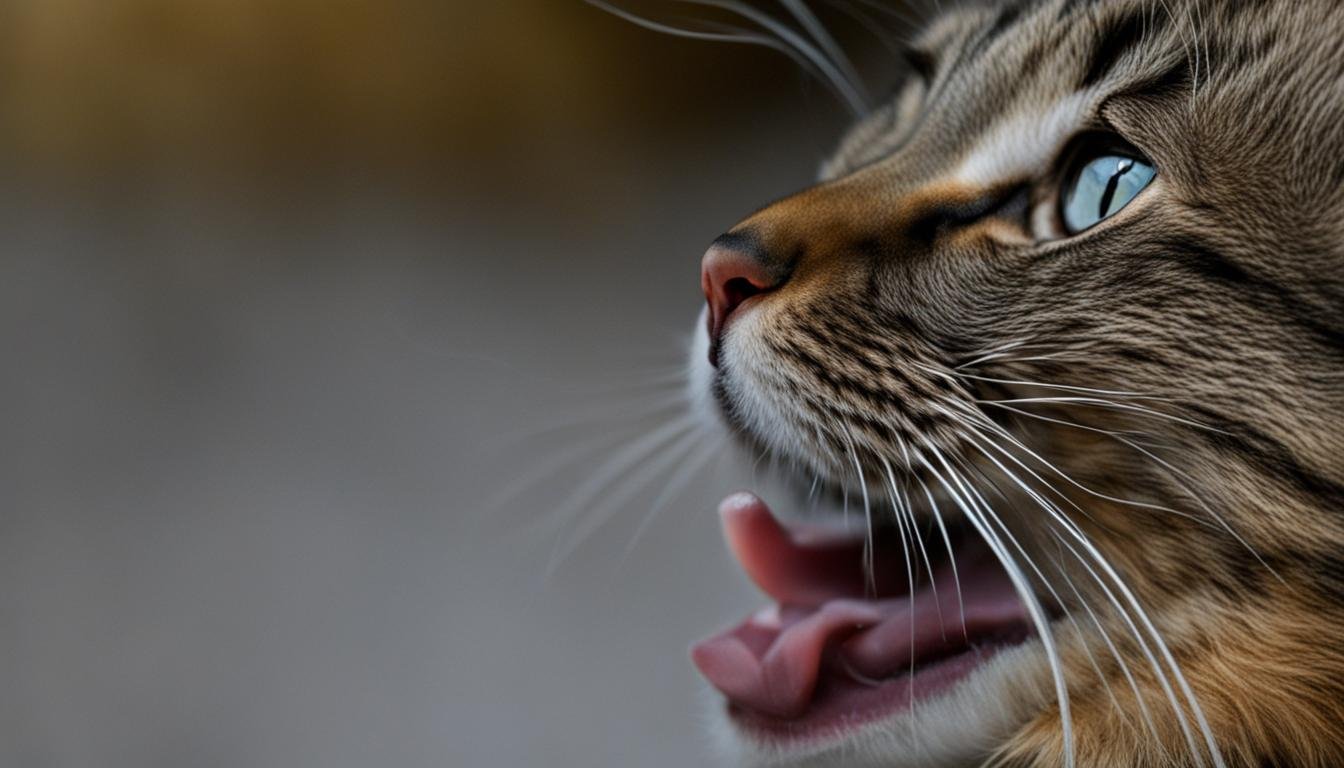Have you ever wondered why your cat has developed a peculiar habit of eating your hair? It’s not uncommon for cats to engage in unusual grooming behaviors that may leave pet owners puzzled. In this article, we’ll delve into the fascinating world of feline behavior to understand why cats exhibit this behavior and how to address it.
Cats are grooming experts, equipped with tiny spines on their tongues called papillae that help them groom themselves effectively. Their natural instinct for grooming allows them to maintain a clean and healthy coat. However, when cats start licking or even consuming human hair, it can be both surprising and concerning.
Amelia Wieber, a certified animal behaviorist, explains that there could be several reasons behind this behavior. Cats may be attracted to human hair as a form of affection, to play, seek attention, or even cope with stress. Understanding these motivations is essential in finding appropriate ways to redirect this behavior and ensure the well-being of your feline companion.
In the following sections, we’ll explore the different reasons cats might be inclined to eat human hair. From using hair as a form of affection to viewing it as a play object, we’ll provide insights to help you decipher your cat’s behavior.
Hair as a Form of Affection
Cats are known for their grooming behaviors, and when a cat licks or chews on human hair, it can be a sign of affection. Cats consider their human owners as part of their family, and they may engage in allogrooming, which is grooming behavior directed towards their preferred associates. This behavior is often observed around the head and neck area, as cats use grooming to bond with their loved ones.
Recognizing that hair licking is a display of love is crucial for pet owners. It’s an endearing way for cats to express their affection. By reciprocating the love in other ways, such as gentle petting or engaging in interactive play, owners can strengthen the bond and deepen the connection with their feline companions.
Hair as a Form of Play
Cats are known for their playful nature, and they often engage in activities that mimic hunting behaviors. When a cat sees a human’s hair as a moving object, it can trigger their natural instinct to pounce, bat, or even chew on it. This playful behavior is normal and harmless, but it’s essential for pet owners to redirect their cat’s playfulness onto appropriate toys to prevent any accidental ingestion of hair. This can help avoid potential hairball issues and other health concerns.
To keep your cat entertained and engaged, provide a variety of toys that satisfy their hunting instincts. Interactive toys, such as teaser wands or laser pointers, can be particularly effective in keeping your cat mentally and physically stimulated. Regular play sessions will not only prevent hair chewing but also strengthen the bond between you and your feline companion.
When choosing toys for your cat, consider their preferences. Some cats may enjoy toys that mimic the movement of small prey, such as feather toys or fake mice. Others may prefer toys with bells, crinkle sounds, or catnip-infused materials. Observe your cat’s behavior and tailor their toy collection accordingly to keep them entertained and engaged.

The Benefits of Interactive Play
Interactive play sessions offer numerous benefits for both cats and their owners. Not only does it help redirect your cat’s playful behavior away from your hair, but it also provides mental stimulation, exercise, and stress relief for your furry friend. Regular playtime can also prevent boredom and destructive behaviors, as well as promote a healthy weight and overall well-being.
| Benefits of Interactive Play | How It Helps |
|---|---|
| Physical Exercise | Engaging in active play helps cats burn off excess energy and maintain a healthy weight. |
| Mental Stimulation | Interactive play sessions challenge your cat’s problem-solving skills and keep their minds sharp. |
| Bonding Opportunity | Playing with your cat strengthens your bond and enhances your relationship. |
| Stress Relief | Interactive play can help alleviate anxiety and reduce stress levels in cats. |
| Preventing Destructive Behavior | A well-exercised cat is less likely to engage in destructive behaviors like scratching furniture or chewing on household items. |
Remember, always supervise your cat during playtime and avoid any toys with small or easily swallowable parts that could pose a choking hazard. Regularly inspect and replace worn-out toys to ensure your cat’s safety.
Hair as a Request for Attention
Cats are masters at understanding cause and effect, and they quickly learn which behaviors will get them the attention they desire. If a cat realizes that licking or chewing on their owner’s hair results in attention, they may continue this behavior to seek more interaction. This positive reinforcement loop can lead to a repetitive cycle, with the cat constantly seeking attention by engaging with the owner’s hair.
To break this cycle, pet owners should provide alternative ways for the cat to seek attention, such as interactive play sessions or engaging with toys.
Affectionate Interaction
When a cat starts grooming or nibbling on their owner’s hair, it may serve as a signal for wanting affection and attention. Cats often have a strong bond with their owners and see them as part of their social group. Engaging in grooming behaviors with human hair can be a way for cats to establish and reinforce this bond.
“Cats view their human owners as part of their family and may use grooming behaviors to bond with them,”
Petting the cat gently and participating in interactive play sessions can be effective ways to provide the desired attention and encourage alternative behaviors.
If hair chewing persists despite providing attention in other ways, it may be helpful to consult with a veterinarian or certified animal behaviorist. They can provide guidance on redirecting the cat’s behavior and offer further insights into addressing the underlying motivation behind excessive hair consumption.
Interactive Play and Enrichment
In addition to providing attention, it’s essential to engage cats in regular interactive play sessions and offer them opportunities for mental and physical stimulation. Playing with toys that mimic prey-like movements can satisfy a cat’s hunting instincts and divert their attention away from hair chewing.
Consider using a variety of toys, such as wand toys or puzzle feeders, to keep the cat entertained and engaged. Providing environmental enrichment, such as scratching posts, climbing trees, and hiding spots, can also help redirect their focus and prevent excessive hair consumption.
| Ways to Redirect Attention | Benefits |
|---|---|
| Interactive play sessions | Provides mental and physical stimulation |
| Use of engaging toys | Diverts focus from hair chewing to appropriate play |
| Environmental enrichment | Offers a variety of stimulating activities |
A combination of attention, interactive play, and environmental enrichment can help break the cycle of hair chewing and redirect the cat’s behavior towards more appropriate outlets.
The image above depicts a cat indulging in hair chewing behavior, emphasizing the importance of providing alternative outlets for their attention-seeking behaviors.
Hair Eating as a Sign of Underlying Issues
In some cases, excessive licking or chewing of hair can be a sign of underlying stress or medical issues. Cats may engage in abnormal grooming behaviors when they are feeling anxious or dealing with dermatitis. If a cat has bald patches, constant licking of themselves or their owners, or exhibits signs of overgrooming, it is important to seek professional help to investigate and address any underlying physical or emotional problems.
It’s essential to rule out any dermatological conditions or nutritional deficiencies that may be contributing to the hair eating behavior. A veterinary evaluation should be considered to ensure the cat’s overall well-being. Your veterinarian can conduct a thorough examination and run necessary tests to determine if there are any underlying health issues at play.
By addressing and resolving the root cause of the hair eating behavior, you can help your furry friend lead a happier and healthier life. Remember, professional guidance is key to accurately diagnosing and managing any underlying conditions that may be causing your cat to exhibit this unusual grooming habit.
